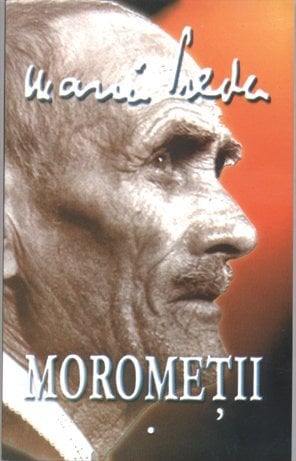
- The Morometes
- Published by: CARTEX
- Level: Intermediate
- First Published in: 1955-1967
The Morometes, a multi-layered literary masterpiece, is Marin Preda’s first novel. It consists of two volumes: the first published in 1955 and the second, twelve years later, in 1967. It is one of the most poignant documents of Romania’s interwar period, tracing the drastic transformation of the country’s rural way of life before and after the Second World War.

The Morometes, a multi-layered literary masterpiece, is Marin Preda’s first novel. It consists of two volumes: the first published in 1955 and the second, twelve years later, in 1967. It is one of the most poignant documents of Romania’s interwar period, tracing the drastic transformation of the country’s rural way of life before and after the Second World War.
"It is one of the most poignant documents of Romania’s interwar period, tracing the drastic transformation of the country’s rural way of life before and after the Second World War."
In the beginning of the first volume, we are introduced to a village where people believe “timpul are rabdare” (time is patient). They lead a peaceful life without major upheavals and are totally oblivious to the fact that the Second World War is about to break out. By the end of the volume, however, their perspective is completely altered, as the course of history is about to change: “Timpul nu mai avea rabdare” (Time no longer had patience). The effects of these changes are chronicled through the Morometes, a conservative Romanian family living in the village of Silistea-Gumesti, in the Danubian Plain. The crisis that erupts at the heart of the Morometes is representative of the crisis of a collective community, the rural Romanian village itself.

As the patriarch of the Moromete family, Ilie is the symbol of a waning social order founded upon strict, traditionalist values. The power dynamics that govern his family are described in the opening scene of the first volume. After a hard day of work in the fields, Ilie and his six children (three from his previous marriage and three from his current wife) sit in their “tinda” (porch) around the table, eating and resting while mother Catrina toils in the kitchen. An argument erupts between Catrina’s stepchildren, who plan to sell the family’s sheep in order to make money, and Catrina’s daughters, who don’t want to miss out on their dowry. The only one who is not interested in making money, out of all the children, is Niculae. His most ardent wish is to go to school. As the head of the family, Ilie’s main task is providing for his family and making sure that equilibrium is maintained, since his children hate their stepmother. Also, finances are his preoccupation, as he needs to pay “fonciirea” (taxes) and other debts. He decides to cut down and sell the massive “salcam” (locust tree), which has stood in his back garden for decades. Not long after chopping down the tree, the Morometes’ illusory stability is shattered when the older sons take the family’s flock and run to Bucharest.
"The novel is filled with symbols and events that foreshadow not only the decline of the family but also the beginning of a larger decline, of the rural universe, its guidelines and beliefs"
The novel is filled with symbols and events that foreshadow not only the decline of the family but also the beginning of a larger decline, of the rural universe, its guidelines and beliefs . The felling of the locust tree, with its dramatic setting, is particularly suggestive. It all happens early in the morning, before sunrise, without witnesses. But “bocetele” (wailing sounds) come from the nearby cemetery. After the tree is cut down, everything around changes and loses its value: “totul pare mic” (everything seems insignificant). Even the language of the book is portentous: Marin Preda’s innovative combination of neologisms and the rural language of Romanian peasants, with its particularities and distinctive features, is indicative of the changes about to follow.

